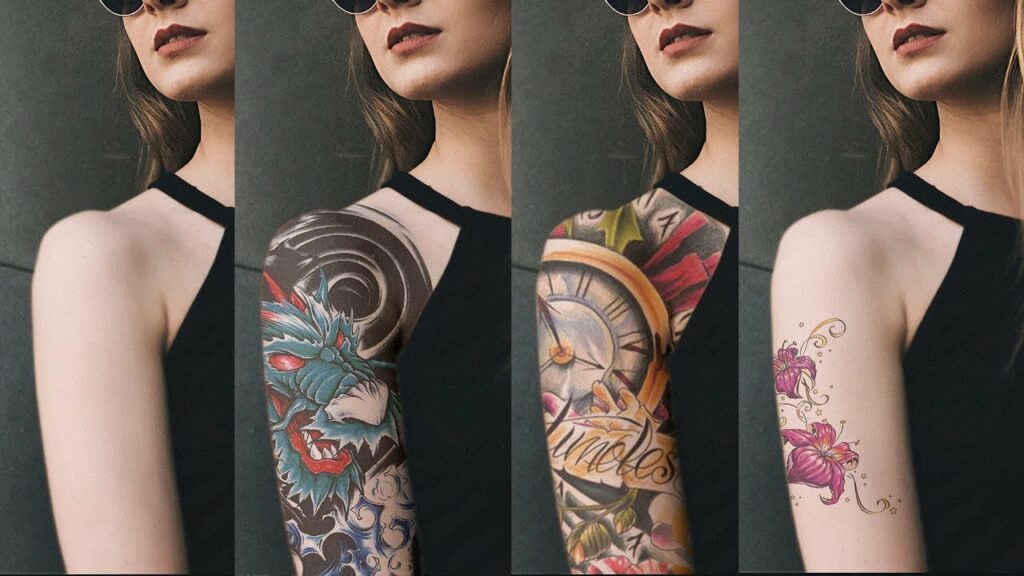Inked Illusions: A Comprehensive Guide to Adding Realistic Tattoos in Photoshop

Introduction: The art of tattooing has transcended its physical confines, finding a new canvas in the digital realm through Photoshop. This comprehensive guide will take you on a journey through the intricate process of adding realistic tattoos to your images, using Adobe Photoshop as your virtual tattoo studio. From selecting the right tattoo design to seamlessly integrating it onto the skin, this step-by-step tutorial will empower you to create visually stunning and authentic tattooed portraits.
Section 1: Understanding the Art of Tattooing Before diving into the practical steps, it’s essential to appreciate the art of tattooing and its nuances. This section explores the cultural significance of tattoos, understanding tattoo styles, and recognizing the visual impact of well-executed body art. Gain insights into the elements that make tattoos realistic, such as shading, details, and placement.
Section 2: Selecting the Right Tattoo Design Choosing the right tattoo design is a pivotal step in creating a realistic and visually compelling result. This section guides you through considerations such as style coherence, size, and placement. Learn how to align the chosen tattoo design with the contours of the body, ensuring a seamless integration that looks natural and enhances the overall composition.
Section 3: Preparing Your Workspace in Photoshop Efficiently setting up your workspace is essential for a smooth tattoo integration process. This section walks you through the initial steps in Adobe Photoshop, from importing your selected images to organizing layers. Explore essential Photoshop tools and features that will be instrumental throughout the tutorial, establishing a solid foundation for your tattooing project.
Section 4: Analyzing Skin Tones and Lighting Achieving a realistic tattoo necessitates a keen understanding of skin tones and lighting conditions. This section explores techniques for analyzing skin tones, recognizing highlights and shadows, and understanding how lighting affects the appearance of tattoos on the skin. Learn how to identify areas where the tattoo will naturally interact with light and shadow.
Section 5: Resizing and Positioning the Tattoo Design Proper sizing and positioning are crucial for a believable tattoo integration. This section guides you through resizing and positioning the tattoo design to match the proportions and perspective of the selected area on the skin. Explore Photoshop’s transformation tools to achieve accurate placement and ensure a realistic relationship between the tattoo and the body.
Section 6: Blending the Tattoo onto the Skin The heart of realistic tattoo integration lies in seamlessly blending the design onto the skin. This section delves into various blending techniques, such as adjusting opacity, utilizing layer masks, and refining edges. Discover how to make the tattoo appear as if it’s part of the skin, respecting natural skin texture and contours for an authentic result.
Section 7: Mimicking Tattoo Shading and Details Shading and details are paramount for creating a lifelike tattoo. This section explores techniques for mimicking the shading and intricate details that define realistic tattoos. Learn how to use brushes, gradients, and blending modes to reproduce the depth and complexity of tattoo art, ensuring that the design integrates harmoniously with the skin.
Section 8: Matching Tattoo Colors and Saturation Achieving color harmony is essential for a convincing tattoo integration. This section guides you through adjusting colors and saturation to ensure the tattoo blends seamlessly with the skin tones. Explore Photoshop’s adjustment layers and color correction tools to refine the color balance and achieve a cohesive and natural appearance.
Section 9: Emphasizing Realism with Texture and Highlights Realistic tattoos often feature texture and highlights that interact with the skin’s surface. This section explores techniques for adding texture and highlights to your tattoo design, enhancing its realism and mimicking the way light interacts with inked skin. Learn how to use brushes and layer effects to create a tactile and visually convincing result.
Section 10: Fine-Tuning and Refining the Tattoo Integration Achieving perfection involves meticulous fine-tuning and refining. This section guides you through refining the overall composition, adjusting any remaining discrepancies, and ensuring a polished result. Explore techniques for smoothing transitions, refining edges, and perfecting the integration of the tattoo into the skin.
Section 11: Adding Tattoos to Multiple Body Parts Extend your skills by exploring how to add tattoos to multiple body parts. This section demonstrates techniques for integrating tattoos onto different areas of the body, each presenting unique challenges and considerations. Learn how to adapt your approach based on the body’s contours, textures, and lighting conditions.
Section 12: Showcasing Your Tattoo Integration Mastery The final step is showcasing your skillful tattoo integration. This section discusses various ways to present and share your image, from exporting high-quality files for digital platforms to preparing prints for physical displays. Learn techniques for maintaining the integrity of your tattoo integration across different mediums and resolutions.
Conclusion: The art of adding realistic tattoos in Photoshop is a blend of technical skill and creative vision. Through this comprehensive guide, you’ve acquired the knowledge and skills needed to master the intricate process of tattoo integration. As you continue to explore the diverse possibilities within Adobe Photoshop, experiment with different tattoo styles, placements, and artistic visions. Let your creativity flow as you transform portraits into captivating works of digital body art, leaving a lasting impression on your audience.




